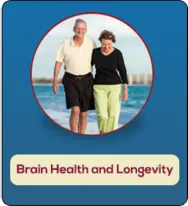
Embedded in our skin, joints and muscles are free nerve endings (sensory receptors called nociceptors) responsible for perceiving pain. These receptors are stimulated by mechanical pressure and chemicals liberated from damaged tissue. Nociceptors when activated transmit signals via pain nerves into the spinal cord and brain. The nervous system then responds reflexively, activating the sympathetic-flight or fight system.
This sympathetic-flight or fight system response has the following functions:
• Increase heart rate
• Increase blood pressure
• Increase respiratory rate
• Increase sweating and
• Indirectly increase muscle tone
Short term (acute) pain may become long-term (chronic) when continued activation of this system causes “wind-up” with additional nerve connections and more neurotransmitters being produced. This increased efficiency of the stimulated pathways results in “central sensitization,” not only at the site of injury but also in other areas of the body where these pain nerves are traveling.
Chronic pain with the resultant “central sensitization” will cause the brain to shrink progressively over time as nerve cells reduce in size and in many cases die. This long-term (chronic) activation of the sympathetic-flight or fight system will lead to many widespread negative changes, including; sympathetically mediated pain, complex regional pain syndrome, and reflex sympathetic dysfunction.
To reverse this trend the Functional Neurologist employs rehabilitation techniques paced at the appropriate therapeutic rate to insure sufficient blood delivery of oxygen and fuel to the muscles, nerves and other soft tissues that have been compromised. If treatment is done too rapidly the patients’ tissues will fatigue quickly causing the release of further pain-activating chemicals.
Please Note: Exercise commonly employed with these chronic pain syndromes, can be harmful in the early stages of rehabilitation when too much demand is placed on the sympathetic system. To enhance the brain-body connection exercise should be used only once appropriate sympathetic control is achieved and the joints in question are stable enough to withstand increased loads.
Dr. Lawrence Nelson is the Director of Nelson Chiropractic and Functional Neurology in Tigard, Oregon. Board Certified in Chiropractic Neurology, he brings his extensive training and clinical experience to assist his patients in relieving pain and suffering. Dr. Nelson is an expert in Whiplash and Concussion recovery, ADD/ADHD and Disconnection Syndrome, and promoting Brain Health and Longevity.
Dr. Nelson is available for a complimentary phone consultation without obligation at 503.855.4465. He can be reached by email at [email protected]
“Using evidence based diagnostics and therapeutics we enhance the brain-body connection, reversing the causes of a shrinking brain and improving our patients’ quality of life TODAY and into the future.”
Lawrence Nelson, DC, DACNB
Nelson Chiropractic & Functional Neurology
7100Hampton St Suite 121-G
Tigard, Or. 97223
Phone: 503-855-4465 | Fax: 888-201-5353
Enhancing Our Patients’ Quality of Life Today and Into The Future
